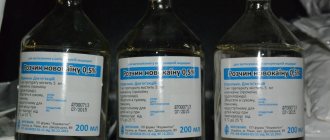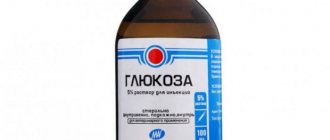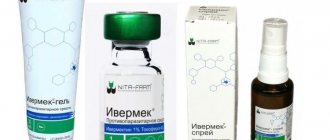Glucose for cats is prescribed in the treatment of various diseases and intoxication syndrome. It helps to support the weakened body of the animal during the period of illness and until complete recovery. When using the drug, it is important to follow the instructions for use from the manufacturer, which are included in each package, in order to maximally protect your pet from unwanted reactions. Glucose is usually given by injection. The procedure can be performed either by a veterinarian or the cat's owner at home.
General characteristics
Glucose injection (Glucosi Solutio proinjectionibus) is a clear or pale yellow liquid that is placed in a glass vial or bottle. To ensure the tightness of the contents, a rubber stopper is used, which is reinforced with a metal cap. The bottle is accompanied by instructions from the manufacturer, which describe in detail its contents, method of use, expiration dates and GOSTs. The bottle with liquid is stored at above-zero temperatures up to 25C in a dark place, protected from excess moisture. Shelf life – 2 years.
The active ingredient of the drug is crystalline medical or hydrated glucose. Auxiliary elements are sodium chloride, water for injection.
They produce 5%, 10, 25 and 40% medicinal products, in which the active substance content is 5, 10, 25 and 40 g per 100 ml, respectively.
The market offers a wide variety of Russian and foreign-made drugs. The drug from the Voronezh pharmacological organization is quite popular. The developer produces an injection solution with different percentages of the active substance and varying volumes (from 10 to 500 ml). It can be used in the treatment of cats, dogs and other domestic animals, as well as large and small livestock.
Important! Before using the drug, consultation with a specialist is necessary. The description below is for informational purposes only and cannot be used for independent prescription and dosage determination.
Features of the medicine
What is remarkable about 5 percent glucose? The instructions say it has metabolic and detoxifying effects, and also represents an essential source of easily digestible and valuable nutrients.
During the metabolism of dextrose in tissues, a huge amount of energy is produced, which is essential for the normal functioning of the body.
The solution in question is isotonic. Its energy value is 200 kcal/l, and its approximate osmolarity is 278 mOsm/l.
Operating principle
In veterinary medicine, isotonic and hypertonic glucose solutions are used. For cats, one of these types may be used depending on the condition of the animal.
The isotonic solution has a concentration of active substance of 5%. It is an easily digestible source of nutrition aimed at providing the animal’s body with the required energy. Glucose injection accelerates the removal of toxins, improves metabolism, and restores water balance.
A hypertonic solution contains 10, 25 and 40% of the main element. It plays an important role in improving the filtration properties of the liver and normalizes heart function. It has a beneficial effect on blood vessels and normalizes blood pressure. The drug helps to enhance the synthesis of hormones and enzymes in a weakened body, which increases its resistance to the disease.
Properties of the drug
How does 5% glucose work? The instructions state that this remedy takes part in the metabolism in the body, and also enhances reductive and oxidative processes, improves the antitoxic functioning of the liver and increases the contractile activity of the heart.
It should also be said that the infusion of such a solution partially compensates for the H2O deficiency. Entering the tissues of the body, dextrose is phosphorylated and converted into glucose-six-phosphate, which is included in the main metabolic components of the human body.
Indications for use
Glucosi is used as an auxiliary drug, which is aimed at maintaining the strength of the animal’s body during illness. It can also be used to dilute other medications.
The most common reasons for use in cats are:
- severe intoxication (food poisoning, chemical poisoning, inflammatory diseases, etc.);
- replenishment of fluid loss;
- bleeding;
- shock phenomena;
- infectious diseases;
- liver dysfunction;
- pathologies and diseases of the digestive system.
Important! The dosage of glucose for cats and the duration of use should be strictly prescribed by the treating veterinarian. Do-it-yourself activities can harm your pet’s health!
Contraindications
Hyperglycemia, diabetes mellitus, postoperative disorders of glucose utilization;
Hyperlactic acidemia, hyperosmolar coma;
Overhydration, cerebral and pulmonary edema, acute left ventricular failure;
Hypersensitivity to the drug;
Circulatory disorders that threaten cerebral and pulmonary edema;
Hemorrhages in the brain and spinal cord (except for conditions accompanied by hypoglycemia);
Self-medication can be harmful to your health. You should consult your doctor and read the instructions before use.
Glucose is the body's source of energy and its main nutrient. During pregnancy, a woman's blood glucose levels change. Its concentration and quantity are controlled by hormones (the main one is insulin). Due to disruption of hormonal levels, a person may experience certain diseases. During pregnancy, the glucose norm is 3.3 – 6.6 mmol/l. It is necessary to constantly monitor its fluctuations in the blood, since it is at this time that the level of amino acids decreases and the level of ketone bodies increases, which can trigger the onset of diabetes.
Application of Glucose
Glucose is used to remove toxins from the body and replenish fluid loss. In medicine, isotonic (for subcutaneous, intravenous, rectal) and hypertonic (for intravenous) solutions are used. A hypertonic solution dilates blood vessels, increases urine volume and enhances the activity of the heart muscle. Isotonic – replenishes fluid and serves as a source of nutrients. This drug is also used for the preparation of drug solutions for intravenous administration and as a component of blood replacement and anti-shock fluids. Glucose in the form of tablets is taken 0.5-1 grams at a time.
Intravenous glucose administration
Intravenous injections of glucose are administered by drip of 7 ml per 1 minute. The daily dose of the drug and the number of injections are determined by the doctor. A 5% solution of the drug should be administered no more than 400 ml per hour and no more than 2 liters per day. With a solution concentration of 10%, the injection rate is 3 ml per minute, and the daily dose is no more than 1 liter. The 20% solution should be administered very slowly, 2 ml per minute and no more than 500 ml per day. 40% glucose must be mixed with 1% ascorbic acid. Injections under the skin can be administered independently; for this you will need an isotonic solution of the drug and a syringe for hypodermic injections. Inject 400-500 ml per day into different places on the skin.
Analysis (test) for blood glucose levels
Before going to donate blood to determine your glucose level, you must not eat 8 hours before the procedure, that is, go on an empty stomach. It is also important not to be nervous before taking the test and not to overload yourself with physical work. The rest is up to specialists. There are three methods of glucose analysis: reductometric, enzymatic and based on color reactions with certain products. There is also a device called a glucometer, which allows you to measure the amount of sugar in your blood at home. To do this, you need to apply just one drop of blood to the test strip.
Mode of application
The dose of glucose for cats is determined strictly individually. It is calculated depending on the weight of the animal, the concentration of the active substance, and the type of disease. The approximate dosage is:
- 5-50 ml for a 5 percent solution;
- 5-20 ml for 40 percent.
The drug is usually prescribed 2-4 times a day.
The drug can be administered subcutaneously or intravenously. A solution with a concentration of the active substance of 40% is administered only intravenously.
It is highly recommended not to skip the administration of the drug according to the schedule prescribed by the doctor. If this happens, then treatment is continued as soon as possible and in the same dosage as indicated by the veterinarian.
how to give glucose to a cat
My Persian cat has become lethargic and has a poor appetite. A neighbor advised me to give the cat glucose, but did not tell me how and in what doses to give it.
Maybe you know how to give glucose to a cat. In no case should you drive away worms if the animal is sick. First you need to find out why she is so lethargic and has poor appetite. After all, she may need treatment. Try to measure the animal's temperature first. If it is elevated, then you need to go to the veterinary clinic. The temperature indicates the presence of the virus in the cat.
Glucose is absolutely contraindicated for cats; cats do not produce insulin, and feeding glucose is a direct path to diabetes, and therefore to the death of the animal. If the cat is exhausted and has poor appetite, it means the animal is sick. Show her to the vet, get tested, do an ultrasound. As a last resort, feed the animal with minced meat, but in no case with glucose.
Glucose is prescribed intramuscularly for severe exhaustion. Your cat doesn't eat much. Deworm her and give her a cold drink. A dessert spoon twice a day. Five days.
Performing an injection
You should check with your veterinarian about how to inject glucose into your cat. Subcutaneous injections are usually performed in the withers (adult animals) or in the upper part of the hind leg (kittens).
To carry out the procedure safely, you should adhere to the general rules for working with the drug:
- It is recommended to perform the procedure with gloves;
- Before and after the procedure, you should wash your hands thoroughly with soap;
- do not drink alcohol or smoke during the event;
- Do not take medications orally that are intended for injection.
Immediately before the injection, you should prepare everything necessary for the procedure so as not to be distracted during its implementation:
- Place a packaged syringe, a glucose solution of the required concentration, and additional medications if they were prescribed by a doctor on a hard surface.
- Open the syringe and draw the required amount of solution (mix the medications according to the prescription indicated by the doctor), release excess air from the syringe.
- Call the animal, put it on the table and secure it well (here you will need the help of someone close to you).
The injection itself is performed as follows:
- With your non-working hand (for right-handers - the left, for left-handers - the right) take the cat by the withers and slightly push the skin upward.
- Using your working hand (for right-handers - the right, for left-handers - the left), take the syringe and insert the needle into the withers no more than a third. The needle should be parallel to the surface on which the cat is located.
- Slightly loosen the grip on the skin and inject the medicine. An indicator of the correct execution of the manipulation is dry hair at the injection site. If the fur gets wet, it means the medicine has not entered the body and the procedure must be repeated.
- Smoothly pull out the needle, release the withers completely and massage a little.
The more confident and smooth the movements of the person giving the injection, the more painless the procedure will be for the cat.
Price
The solution is a fairly inexpensive drug. Its price will depend on the volume of the bottle, the concentration of the active substance, and the financial policy of the manufacturer.
On average, the cost for a 100 ml bottle is 50 rubles.
Home » Diseases » Glucose for animals instructions for use. Glucose for cats dosage
In the section on the question Question for veterinarians and knowledgeable people. What physical the solution is more nutritious than glucose (subcutaneously for a cat). asked by the author Outgrowth, the best answer is Subcutaneous injections with a nutrient solution for dehydration of the bodyLeonid Filippov For subcutaneous feeding with saline solution (or better Ringer-Locke solution from a human pharmacy), draw 10 cubes of saline solution into a 20-cc syringe.
There is also a 2% solution of Glucose in saline (also sold in human pharmacies) 2 cubes. If the cat is still dying of hunger, exhausted, then you can add five cubes of Glucose in saline a couple of times, nothing. In the same syringe - ONE type of vitamins. If it is an enteroinfection or the like, the most important vitamin is to alternate between B12, B6 and ascorbic acid.
The dose of vitamins is a quarter of a one-cubic ampoule. If you inject B12 (200 IU per ampoule), then take half an ampoule. If B12 (500 IU per ampoule) is a quarter of the ampoule. And it’s good to add cocarboxylase as the fourth component. I repeat, for each injection - one vitamin. Having collected all this into a syringe, chat, close the needle tightly with a cap and heat the syringe under running warm water until approximately 40 oC.
Then wipe and replace the needle with a needle from an insulin syringe. Using three fingers (thumb, index and middle) of the left hand, pull the cat’s skin so that the index finger is between her shoulder blades. A sort of hump-hood is formed with a fold under the index finger. Wipe thoroughly with alcohol.
Make sure that there is free space under the skin (as if there is air in it), press slightly on the plunger of the syringe so that the medicine splashes out a little at all. Insert the needle into this space - be sure to make sure that its tip is located UNDER the skin, and not IN skin. Inject the medicine (all 12-18 cubes) in a row - slowly - into this subcutaneous space.
It should be EASY to walk, as if in the air. If it doesn’t go, then the needle is in the skin! A soft swelling will form on the back of the neck for a short time - this is normal and completely painless for the cat. It will dissolve before our eyes, and the animal will immediately feel a little better. If the cat does not drink for a day or more, it should be injected once every three to four hours until the cat begins to pee profusely.
After this - at least three times a day - until she recovers and starts drinking on her own. ATTENTION! This is not a treatment for the underlying disease, but support for water-salt balance! I know of cases where people in extreme situations boiled ordinary tap water for a long time with table salt dissolved in it (saline solution - 0.9% NaCl) and glucose from tablets - and saved the animal’s life.
Even if the cat cannot eat food or is not allowed to do this, it NEEDS subcutaneous injections! (((). We gave an injection of no-shpa intramuscularly and an enema (butterfly syringe) with glycerin, the stool began to pass perfectly.
It is also good to relieve constipation in cats with Duphalac; cats themselves can lick it off and a teaspoon is enough. so that after 2-5 hours, soft stools begin to pass (not diarrhea). And you can give baby food in jars (meat puree), it is not greasy and is absorbed well. Good luck to you in the future and may there be competent veterinarians!
Intramuscular injection for a dog
Can you give your dog an injection yourself? This is usually what the doctor asks before making a prescription. No! “This is not for me, I’m afraid,” the owner of the animal answers with fear in his eyes, while others, on the contrary, can install an IV on their own.
Let's, together with those who don't know how, learn how to properly give an injection to a dog, this skill will help you cure your pet faster and you will also save money on calling a veterinarian.
What are we going to inject with?
Today at any pharmacy you can buy disposable syringes of different sizes, which will make it easy to give an injection. Take the appropriate syringe depending on the size of the animal and the dose of the drug.
In this photo you see an ordinary plastic two-room apartment. In blue, I marked the volume as 1 ml or 1 cube (cm 3), and in red as 0.4 ml.
Disposable syringe “kopeck piece”
But on this five, the volume is also marked in blue as 1 ml, and in red as 0.4 ml.
Disposable syringe “five”
Be careful, people often get confused between syringes. In the first case, in order to inject 0.4 ml, we mark 4 divisions, and in the second, for the same volume, we need to mark 2 divisions. I don't want to be boring, but this is important. Nothing bad will happen if you make a mistake when injecting saline or vitamins, but you can’t make a mistake with antibiotics or hormones.
Perhaps the most popular types of syringes are: kopeck and five, but they also use huge ones - the Janet syringe (150 ml, this was how Morgunov was vaccinated against foot and mouth disease in the film "Prisoner of the Caucasus") and very small ones - insulin. The size depends on the dose and properties of the drug, I do not recommend injecting oily and viscous solutions with insulin or kopeck piece, of course you can, but you yourself will suffer and torture the animal.
Even small breeds can use a regular two-cc syringe, but I feel sorry for the dog, so they inject it with a thin insulin needle. But it’s better to endure one injection from a thick needle than to inject a viscous substance through insulin for a long time. Yes, it can be used for non-concentrated solutions, but not for viscous ones.
We invite you to read: Fibrosarcoma in cats - prognosis, signs, treatment
How will we inject
Before properly injecting your dog, you need to prepare the injected solution and needles. It is important that you bring the medications to the animal’s body temperature.
Well, as a last resort, warm them up in your hand, or better yet, put them in warm water, but you don’t need to overheat, 37-39 0 C is enough. Then the dog won’t be in pain and it will tolerate the injection easier, especially this rule must be observed when you inject a large volume of liquid.
Another important point, pay attention to this photo.
Antibiotic bottle
It shows a regular bottle of antibiotics, sealed with a rubber stopper. When you use these bottles, after puncture, replace the needle with a new one. Of course, this is not necessary, but it is advisable, because the needle becomes very dull from the cork and can become clogged with a piece of rubber. And when you poke an animal with a blunt needle, it will naturally hurt, the dog will whine, and you will panic.
You will not have a question about how to properly give an injection to a dog if you think through everything and prepare in advance; it is also important to have peace of mind during the procedure and behave confidently. Your pet senses when the owner is nervous and the fear will transfer to him.
There are several types of ampoules, most of them open without filing, such ampoules are marked with a white belt or a colored dot, marked with a red arrow in the photo.
Sometimes such marks seem to be placed for beauty and the glass still needs to be filed down. The undercut can be made using a special disk, which is placed in the package with the drug, or a file, needle file, nail file, on the corner of a sharpening stone, and then you can figure it out yourself.
When breaking off glass, protect your fingers with a piece of cotton wool or syringe packaging, I usually use packaging. Be sure to do this so as not to injure your hands; sometimes the ampoule may burst in your hands, especially when you are in a hurry, which often happens in emergency situations, for example.
It happens that there is more drug in an ampoule than you need for one injection, so in order to save money, you can put all the substance into a syringe and use it within 3-4 days. Remove air from the syringe and store in a cool, dark place, preferably a refrigerator. When you give an injection, change the needle and inject the desired dose.
We draw the required dose from a larger syringe into a smaller one
Now, after a long but necessary preparation, let’s move on to the main thing - how to properly inject a dog.
The main thing is to take your time, lay the dog on its side so that it relaxes the muscles, feel the back of the thigh, find where the bone is located - there is no need to prick there. And you need to insert the needle approximately into the middle of the thigh, where you will find the most muscles. This photo shows the injection site, click on the photo to enlarge.
Intramuscular injection site
There are many tricks and techniques regarding how to hold a syringe; you can use different ones, but the main thing is that after inserting the needle you feel comfortable pressing the plunger. When the needle is sticking out in the butt, there is no need to turn the syringe around to better see the scale or turn it from side to side.
Take the syringe at the base of the needle and firmly insert the needle, then grab and press the plunger. The depth to which you need to inject depends on the size of the dog, for small ones (up to 10 kg) by 0.5-1.5 cm, and for large ones you can inject up to 3 cm.
The rate of introduction of solutions depends on its quantity and density, on average it is 1 ml in 2 seconds. After the injection is made, remove the syringe at the same angle as you injected, also confidently and cheerfully. Hold the skin with your free hand, and then massage the injection site, it will not hurt so much and, by massaging, you will shift the layers of tissue so that the drug does not flow out through the puncture.
Now let’s figure out how to properly inject a dog subcutaneously or in the withers area. This is the easiest way to administer fluids, but it has some limitations. It is not advisable to administer concentrated drugs - it will hurt, and then swelling and other complications will appear. For example, seemingly harmless glucose, which many people like to inject so that the dog does not die of hunger, is released in different forms. Or rather, different concentrations: 40% and 5%, so a 5% solution can be administered subcutaneously, but a 40% solution can only be administered intravenously.
Recently, an acquaintance unknowingly injected his dog into the withers area with 10 ml of 40% glucose, the poor dog literally peed itself. I don’t want to scare you, but I want you to be careful and know how to properly inject your dog.
Owner reviews
Andrey:
“The cat was diagnosed with acute gastroenteritis. They prescribed a course of certain medications and glucose. Basic medications were administered directly from the vet, and at home I injected my own glucose. The cat’s illness did not linger; she gradually began to eat and drink on her own, after which the medications were discontinued. The question arose when the solution for veterinary purposes ran out and I had to buy a regular (human) one. It turns out that it can also be injected into animals, but it is advisable to still use a veterinary one.”
Maria:
“A kitten strayed to us and we decided to keep it. However, he turned out to be sick, did not eat, did not drink, was lethargic, vomited, and lay motionless. They took him to the veterinarian, where they took blood tests - it turned out to be a bacterial infection. An antibiotic and glucose injections were prescribed. Getting the kitten out turned out to be difficult, but we did it. Glucose helped very well to support the animal, since he could not eat anything and even vomited from water. Now everything is all right".
Is it possible to overdose?
If you follow the dose prescribed by the veterinarian and give it by mouth or give the injection intramuscularly correctly, then this phenomenon will not be observed. When owners begin to give their pet water or give injections on their own, the risks of overdose are high. If the solution is used excessively, the animal's blood and urine sugar levels increase.
An incorrectly selected dose of glucose can lead to an imbalance of electrolytes and the accumulation of large amounts of fluid in the cat's body. If unpleasant symptoms continue for several days, then your pet should be taken to the veterinarian. In such cases, the medication is discontinued and insulin is prescribed or saline infusion is performed.









